You are using an out of date browser. It may not display this or other websites correctly.
You should upgrade or use an alternative browser.
You should upgrade or use an alternative browser.
Hedi Slimane - Designer
- Thread starter agee
- Start date
IndigoHomme
Well-Known Member
- Joined
- Mar 20, 2014
- Messages
- 2,979
- Reaction score
- 1,618
Hedi for Vogue US editor in chief.
Vogue Mexico did it with Willy Chavarria, so it's not that crazy
Lola701
Well-Known Member
- Joined
- Oct 27, 2014
- Messages
- 14,060
- Reaction score
- 38,036
I would actually love for him to edit a magazine even though I’m afraid he may want to shoot every story himself…Hedi for Vogue US editor in chief.
I think in some ways, it’s totally dishonest or maybe ignorant of Raf to say that because precisely, Hedi at Dior and Nicolas at Balenciaga molded the houses to their image. In some ways, they treated Dior Homme and Balenciaga like their own houses. Going to a Dior Homme store was going to Hedi’s mind. The same for Balenciaga.Raf said he’s like Nicolas, who don’t know what it is to have their own brand.
View attachment 1425098
System Magazine
The only difference is that maybe Raf never had the opportunity to express himself that much at a brand.
I just don’t think Raf is that structured as a designer and neither that his taste overall aligns with his work in fashion.
Nicolas would have never done Dior or even Saint Laurent. From Dior to CK to Prada is a huge jump.
Ahahah I’m sorry. You make work hard too! Thank god I’m struck in traffic lol.Lola you make me write allot again lol
But maybe I should ask you why don’t have the same indulgence for others then? .....this part i did not get if you can explain i will be happy to answer as always
The whole rethoric was about the idea of imposing an aesthetic au dépens of the ethos of the brand. And because for me it’s a negative trait, you listed a bunch of designers who for you are imposing their aesthetic at the dépens of a brand.
But if we follow the logic that Hedi Slimane going from brand to brand, doing the same thing with more or less variation with all that comes with it (from store design to culture) and consider that it’s great.
Maybe then we should consider that the list of people you named should receive the same grace, as it is great for Hedi.
And for me it’s more a question of compatibility. I don’t subscribe at all to the idea of putting looks by looks to prove a point. Creative freedom and credibility goes beyond that.
Matthieu Blazy did the confetti hats at BV and Chanel and Karl did the confetti hats at Chanel for SS1993. Putting those side by side won’t prove a point. You like it or not it’s credible for you or not.
Personally, I wouldn’t Hedi at Armani. And seeing beautiful gowns, which are isolated moments, is not convincing enough. I think in his work as a designer and in the expression of his creativity, Armani will be too limiting for him.
At some point, he will do his rocker/groupie thing because it’s him. It’s part of his ethos as a designer. It’s part of his universe. And that won’t be credible under the name Armani. It’s like Galliano. He believed in his décortiqué, doing everything tabi but his Margiela wasn’t credible.
I have always seen Hedi’s reframe of a house as a way to ease himself into it. And at Armani it’s already there.
I have talked about it with my fashion friends and they are laughing but I have said to them that for me, the house I see Hedi flourish the most is JITROIS. The quality is there, it’s quite close to his sensibility and yet, everything there has to be redone. Of course nobody could afford him there….
PDFSD
Well-Known Member
- Joined
- Mar 27, 2024
- Messages
- 3,099
- Reaction score
- 11,157
Agree Raf is dishonest at best with his low key shade.I would actually love for him to edit a magazine even though I’m afraid he may want to shoot every story himself…
I think in some ways, it’s totally dishonest or maybe ignorant of Raf to say that because precisely, Hedi at Dior and Nicolas at Balenciaga molded the houses to their image. In some ways, they treated Dior Homme and Balenciaga like their own houses. Going to a Dior Homme store was going to Hedi’s mind. The same for Balenciaga.
The only difference is that maybe Raf never had the opportunity to express himself that much at a brand.
I just don’t think Raf is that structured as a designer and neither that his taste overall aligns with his work in fashion.
Nicolas would have never done Dior or even Saint Laurent. From Dior to CK to Prada is a huge jump.
Ahahah I’m sorry. You make work hard too! Thank god I’m struck in traffic lol.
The whole rhetoric was about the idea of imposing an aesthetic au dépens of the ethos of the brand. And because for me it’s a negative trait, you listed a bunch of designers who for you are imposing their aesthetic at the dépens of a brand.
But if we follow the logic that Hedi Slimane going from brand to brand, doing the same thing with more or less variation with all that comes with it (from store design to culture) and consider that it’s great.
Maybe then we should consider that the list of people you named should receive the same grace, as it is great for Hedi.
And for me it’s more a question of compatibility. I don’t subscribe at all to the idea of putting looks by looks to prove a point. Creative freedom and credibility goes beyond that.
Matthieu Blazy did the confetti hats at BV and Chanel and Karl did the confetti hats at Chanel for SS1993. Putting those side by side won’t prove a point. You like it or not it’s credible for you or not.
Personally, I wouldn’t Hedi at Armani. And seeing beautiful gowns, which are isolated moments, is not convincing enough. I think in his work as a designer and in the expression of his creativity, Armani will be too limiting for him.
At some point, he will do his rocker/groupie thing because it’s him. It’s part of his ethos as a designer. It’s part of his universe. And that won’t be credible under the name Armani. It’s like Galliano. He believed in his décortiqué, doing everything tabi but his Margiela wasn’t credible.
I have always seen Hedi’s reframe of a house as a way to ease himself into it. And at Armani it’s already there.
I have talked about it with my fashion friends and they are laughing but I have said to them that for me, the house I see Hedi flourish the most is JITROIS. The quality is there, it’s quite close to his sensibility and yet, everything there has to be redone. Of course nobody could afford him there….
Ok i got it what you mean:
I don't disapprove of designers taking part or most of their ways of design philosophy to another brand when it makes it believable and there is the right tension of new and old original DNA, i don't know yet how to describe it but one i more convinciening than the other like JWA i thing is more convincing that what he is doing is Dior or in dior spirit with the ads the show for me was a miss step but the small ig stories i can start believing in it even if i don't like the sweet product but Dior its a part of original Dior.
Michele take on gucci for me even if it was successful felt to wide and anything and i feel Blazy is same designer that can't choose because why should he if 2 3 bags became hit he can stay longer as was case with Michele at Gucci.
Demna in this case is doing same stuff but reframed it in an italian cliche which was a low hanging fruit to buy him time to decide how to use TF´s gucci for 2026 ( it won't be easy as it might seem he knows it as his mini team around him of geniuses he took with him to Gucci )
Speaking of NG´s Balenciaga i find early balenciaga very much close to Cristobal it was sevre and dark and monastic and not easy and not for everyone , NG did some round cocoon shapes early on first collections as well clever not obvious like PPP now.
JG at Margiela was a stretch but he got the blessing of martin to make it his own for me then i back off i stop wearing margiela since he left any ways. to me the brand means nothing now its trashy IG tabi viral joke old margiela is iconic but i would not want to wear any of it because it means something else now.
I like how Hedi explained his approach to YSL in this old Yahoo interview to me it all makes sense , and the rock thing is his touch as JWA likes ARTy Farty stuff , and JG bias cut Flamingo Drag Drama , as TF like studio 55 etc
JITROIS he could make super cool i agree but so could diva Haider he can lose his temper shouting at the small team.(less people in therapy)
Blazy´s Chanel project is just incomplete as was his BV at a brand that important i rather see than a true vision like phoebe or hedi radical to every detail not just empty explosion of loose ideas like vomit on black marble floor.
Its about convincing i think for me Hedi does it like some others Blazy not and i bet never will.
i can compile many looks of hedis shows that are armani i just not that difficult i used red carpet as the both have clear red carpet overlap and it was about rich ladies look etc.
PDFSD
Well-Known Member
- Joined
- Mar 27, 2024
- Messages
- 3,099
- Reaction score
- 11,157
Chanel always had reach to upcoming or young starlets that were none french like Blazy say Chanel is global lolI don’t like Karl and has not yet liked Blazy but really? Chanel has nothing to do with that, why should he do such things?
i remember R&B Legend Monica at the 1999 Grammys wearing Chanel by Karl Lagerfeld Spring/Summer 1999 Haute Couture went to shows.
“Karl has been extremely kind to me. He brought me to the Chanel shows, and I wear a lot of the collection." — Monica, 1999
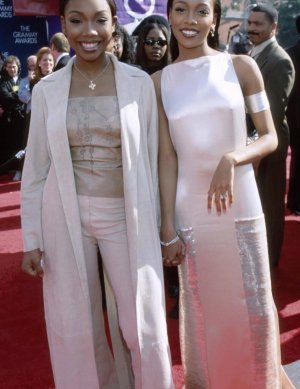
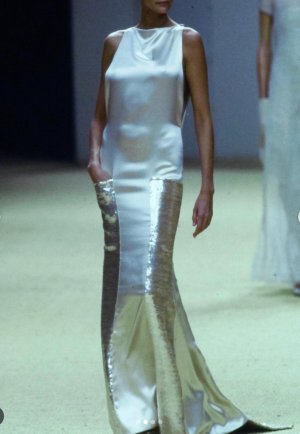
Chanel is coca cola for every one that can afford it :-)
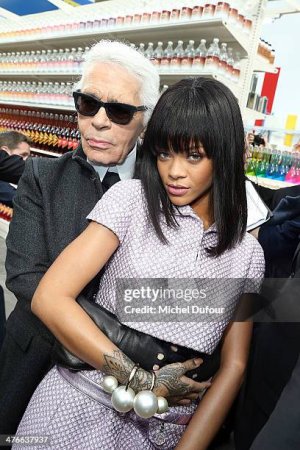
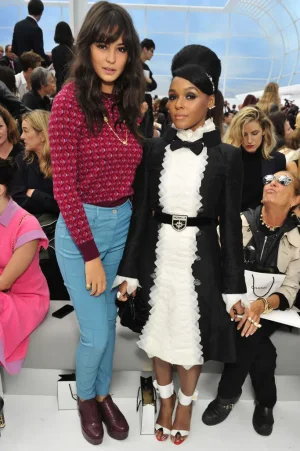
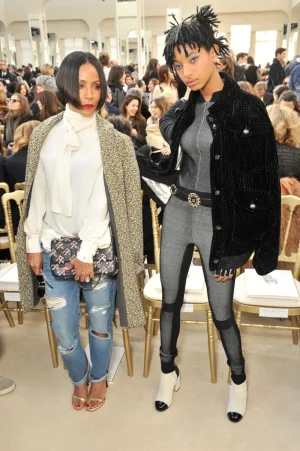
etc etc
PDFSD
Well-Known Member
- Joined
- Mar 27, 2024
- Messages
- 3,099
- Reaction score
- 11,157
Susanna Nicoletti
Calm down...and I am not saying it to my community.
Since I posted of the arrival of Hedi Slimane at Giorgio Armani (which is my point but you know that it's not done until it is communicated) the fashion community went crazy.
Nobody cares about the drift this industry is taking and the crisis of many brands - with the exception of this wonderful community of professionals of which I am super proud, but many get hysterical about a post regarding Slimane.
This is the problem of the industry, drifted away by way too many irrational emotions and not paying enough attention to the reality and the troubles.
Too much histery and not enough cold blood analysis.
I wrote thousands of posts in the past 10 years and 122 newsletters, and all they can do is getting hysterical about Slimane?
Wow...
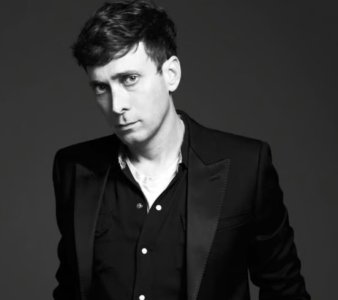
what did she expect bit Naive to say the least lol
Calm down...and I am not saying it to my community.
Since I posted of the arrival of Hedi Slimane at Giorgio Armani (which is my point but you know that it's not done until it is communicated) the fashion community went crazy.
Nobody cares about the drift this industry is taking and the crisis of many brands - with the exception of this wonderful community of professionals of which I am super proud, but many get hysterical about a post regarding Slimane.
This is the problem of the industry, drifted away by way too many irrational emotions and not paying enough attention to the reality and the troubles.
Too much histery and not enough cold blood analysis.
I wrote thousands of posts in the past 10 years and 122 newsletters, and all they can do is getting hysterical about Slimane?
Wow...

what did she expect bit Naive to say the least lol
PDFSD
Well-Known Member
- Joined
- Mar 27, 2024
- Messages
- 3,099
- Reaction score
- 11,157
Comment on the Susanna post by one of her followers :
I also shared this more than a month ago with ....; it is what it is! Industry insiders know he’s there at Armani!
Let’s hope it doesn’t become the next Saint Laurent/Celine
I also shared this more than a month ago with ....; it is what it is! Industry insiders know he’s there at Armani!
Let’s hope it doesn’t become the next Saint Laurent/Celine
Phuel
Well-Known Member
- Joined
- Feb 18, 2010
- Messages
- 6,296
- Reaction score
- 11,456
i can compile many looks of hedis shows that are armani i just not that difficult i used red carpet as the both have clear red carpet overlap and it was about rich ladies look etc.
Absolutely. Chanel and Giorgio Armani is very much infused into Hedi’s sensibility— whether intentional or subconsciously. Frankly, I don’t even mind his signature cast of waifs/skaters/indie band members. Lee Radziwill will always be the ideal Armani woman and muse— and she is the Mother of all waifs. Hedi's final Celine womenswear outing could easily transition to a standard at Giorgio Armani. Easily.
Whether Hedi has sworn some blood-oath in abandoning his Dior Homme era or not, many of the separates of that era, in particular S/S 2003, could effortlessly be resurrected with some minor tweaks-- in particular redone in signature Giorgio Armani wool/rayon, as a modern, refreshed revision of the classic Giorgio Armani code. And I don't mind the casting of handsome young men of this show the least, either for his Giorgio Armani.
hamburgers
Well-Known Member
- Joined
- Mar 25, 2025
- Messages
- 280
- Reaction score
- 1,207
Raf said he’s like Nicolas, who don’t know what it is to have their own brand.
I mean it's delivered charmlessly as usual, but it's true. It's hard to imagine Nicolas or Hedi enjoying the sacrifices and headaches of a start-up lifestyle with their own brands especially now that they've become accustomed to the gilded cage of unlimited resources that is LVMH. The woes of being an independent today are way too much to list but let's just say Tom Ford with all his pride selling his brand, Barney's owing The Row $3.7 million USD when they declared bankruptcy (aka no obligation to pay it back), young designers starting their own brands just as portfolios for bigger corporate jobs/saying they can't afford their own clothes at retail, and some of the Phoebe Philo product being made in Slovakia paints a general picture of things now. Those two are born creative directors in that they make full use of their resources and push them to the limit.
His final job should be CD of Chrome Hearts. He'd have everything he could want from a homebase in LA, carte blanche in beauty, and a closed circuit of devoted elites without the politics of the fashion industry he can't seem to handle anymore etc.
Absolutely. Chanel and Giorgio Armani is very much infused into Hedi’s sensibility— whether intentional or subconsciously. Frankly, I don’t even mind his signature cast of waifs/skaters/indie band members. Lee Radziwill will always be the ideal Armani woman and muse— and she is the Mother of all waifs. Hedi's final Celine womenswear outing could easily transition to a standard at Giorgio Armani. Easily.
Whether Hedi has sworn some blood-oath in abandoning his Dior Homme era or not, many of the separates of that era, in particular S/S 2003, could effortlessly be resurrected with some minor tweaks-- in particular redone in signature Giorgio Armani wool/rayon, as a modern, refreshed revision of the classic Giorgio Armani code. And I don't mind the casting of handsome young men of this show the least, either for his Giorgio Armani.
The drape and the sharper pleats. I'm in.
Would love to see him come back to fashion as a counter to this look of Phoebe Philo/The Row/Lemaire/Bottega/New-Chanel hell we are in.
Lola701
Well-Known Member
- Joined
- Oct 27, 2014
- Messages
- 14,060
- Reaction score
- 38,036
Part of the intellectual dishonesty of RAF regarding that is in part the fact that he is having this discussion with Miuccia Prada.
If we want to talk about someone who in her career never had to endure the hardships of being a fashion designer, it’s her…
But I also think that his statement kind of dismiss their path. Both were extremely lucky but there was a concours de circonstances. But for me it’s not so much about the guilded cage of LVMH or elsewhere. I think someone like NG could eventually launch his own brand as he wanted. I don’t think his project will try to be at the scale of what he did in the past.
With Hedi it’s a lot more subtle. Fashion in his work is part of an eco-system that include music, art, architecture and photography.
His vision wouldn’t be fulfilled without all of it. I don’t think his work would make sense without that encrage.
@PDFSD Do you think the Hedi/Armani thing is a way to motivate either L’Oreal or LVMH to enter into war of biding?
At first I though about it as something that could happen once L’Oreal buys the brand but if what the reports are saying is true, could it be the way around!?
Armani is an asset on it own, a dangerous asset but with Slimane, it’s a stronger, more attractive one.
If we want to talk about someone who in her career never had to endure the hardships of being a fashion designer, it’s her…
But I also think that his statement kind of dismiss their path. Both were extremely lucky but there was a concours de circonstances. But for me it’s not so much about the guilded cage of LVMH or elsewhere. I think someone like NG could eventually launch his own brand as he wanted. I don’t think his project will try to be at the scale of what he did in the past.
With Hedi it’s a lot more subtle. Fashion in his work is part of an eco-system that include music, art, architecture and photography.
His vision wouldn’t be fulfilled without all of it. I don’t think his work would make sense without that encrage.
@PDFSD Do you think the Hedi/Armani thing is a way to motivate either L’Oreal or LVMH to enter into war of biding?
At first I though about it as something that could happen once L’Oreal buys the brand but if what the reports are saying is true, could it be the way around!?
Armani is an asset on it own, a dangerous asset but with Slimane, it’s a stronger, more attractive one.
Kanzai
Well-Known Member
- Joined
- Oct 5, 2023
- Messages
- 1,198
- Reaction score
- 3,314
I think the real challenges for Hedi is 80s Armani (his height), Armani’s ethos is clearest in that decade. If as rumor has it he worked directly with Giorgio then hopefully he's taught well. Hedi is a visionary so I hope he adapts to it.
bc collector
Well-Known Member
- Joined
- Jan 29, 2006
- Messages
- 668
- Reaction score
- 2,192
Somebody has to tell me what Hedi has to do with Armani: please, explain.
The lawyers are the lucky onesIt's been a minute that this is going around in the industry, even prior to Armani's passing. Everyone started speculating when we had heard that Hedi had bought real estate in Milan (and don't get me wrong but to be going there at every fweek for years now, it's not like he must have gotten a place because it's a greatly inspiring city with so much to do...). Let's see. If it happens it's going to be a contractual nightmare... His oversight on all those lines, the rebrandings, the involvement in their beauty business... Good luck to everyone's lawyers

PDFSD
Well-Known Member
- Joined
- Mar 27, 2024
- Messages
- 3,099
- Reaction score
- 11,157
It does not hurt Armani price to go up absolutely to benefit the familie sellers with the Hedi rumors..... as per BOF article some one at L’Oreal said that they are only into the beauty part but are following the sale closely (but this can be also to not show your cards so early on to put this in the press as a misleading info for better negotiations )Part of the intellectual dishonesty of RAF regarding that is in part the fact that he is having this discussion with Miuccia Prada.
If we want to talk about someone who in her career never had to endure the hardships of being a fashion designer, it’s her…
But I also think that his statement kind of dismiss their path. Both were extremely lucky but there was a concours de circonstances. But for me it’s not so much about the guilded cage of LVMH or elsewhere. I think someone like NG could eventually launch his own brand as he wanted. I don’t think his project will try to be at the scale of what he did in the past.
With Hedi it’s a lot more subtle. Fashion in his work is part of an eco-system that include music, art, architecture and photography.
His vision wouldn’t be fulfilled without all of it. I don’t think his work would make sense without that encrage.
@PDFSD Do you think the Hedi/Armani thing is a way to motivate either L’Oreal or LVMH to enter into war of biding?
At first I though about it as something that could happen once L’Oreal buys the brand but if what the reports are saying is true, could it be the way around!?
Armani is an asset on it own, a dangerous asset but with Slimane, it’s a stronger, more attractive one.
For me its in their best interest to keep the value of Armani in tack since they need to profit from it for another 25 year to come so either by joint ownership with a LVMH or some other buyer that can run the fashion side to keep brand halo alive.
Via BOF :
Armani representatives have made informal approaches to some potential buyers for a minority stake in the renowned Italian fashion group, three sources with knowledge of the situation told Reuters, effectively starting a de-facto auction for a slice of one of the world’s best-known fashion empires weeks after the designer’s death.
L’Oréal, is among those that have been approached, two of the people said. The talks are early stage, however, one of the people said, adding that any progress could take months. Private equity bidders so far have not been solicited as potential buyers, one of the sources and a fourth one said.
L’Oréal, which holds a licensing agreement with the Armani group until 2050
Putting a price tag on a company is always an inexact science — particularly so in the case of Armani. As the group isn’t listed, there is no official market value, nor has a stake ever been sold, leaving analysts and investment bankers to estimate a figure based on the company’s current finances and hypotheses about its growth potential.
If Armani were sold today, the valuation would probably range between €4 billion ($4.7 billion) and €7 billion, according to industry analysts and insiders. Forbes estimated Mr. Armani’s net worth at the time of his death at $12 billion, the majority of which would be tied up in the company.
How to make sense of such a large range?
Unlisted luxury companies like Armani are typically valued using profit and revenue multiples as well as intangibles like the value of the brand and comparisons to peers that are publicly traded or have recently been acquired.
Armani has a strong, globally recognised brand that has supported its expansion into everything from new apparel lines to hotels. But revenues fell about 5 percent in 2024 to €2.3 billion, a figure that includes lucrative royalties paid by licensing giants L’Oréal in beauty and EssilorLuxottica in eyewear, roughly in line with what the company reported in 2017.
Armani-branded products made under license by other companies generated about €1.9 billion in revenue in 2024, a portion of which Armani received as royalties. Armani doesn’t disclose exactly how much, but the industry standard is 8 to 12 percent, with particularly strong brands sometimes commanding a few more percentage points.
If Armani received 12 percent of the revenue generated by the licensed products as royalties, that would equal about €230 million, the vast majority of which would go directly to Armani’s bottom line since the company incurs limited costs associated with the licenses. Armani reported €67 million in operating profit last year, well below the profit generated from the royalties. That would put the loss from Armani’s fashion lines at more than €150 million.
The company’s fashion businesses run the gamut from accessibly-priced Armani Exchange t-shirts and jeans to top-end couture from Armani Privé. Lower-end lines, where Armani is well represented, tend to have weaker profit margins and have been hit hardest by the industry’s recent downturn.
Armani has never had a well-developed leather goods business, typically a critical profit centre for luxury brands and therefore a key growth opportunity for a potential buyer. LVMH would have the expertise, size and synergies to turn around the business and expand Armani’s footprint in handbags, but the job is likely to take several years and require considerable investment.
Complicating matters is the wider state of the luxury market. The sector is facing a sharp downturn in consumer demand. M&A activity in the fashion and luxury sector fell by a quarter in 2024, though consulting firm Deloitte found that 90 percent of private equity investors and companies plan to continue investing in the sector, a potential boost for Armani.
By specifying his preference for a top industry player like LVMH, however, Armani made clear that he didn’t want his company to fall into the hands of a private equity firm. Finding a strategic buyer willing to adhere to the terms set out by the meticulous “King Giorgio” could depress the company’s potential valuation further. Chief among the stipulations is a provision that the Fondazione Armani, which owns 100 percent of Armani, will always maintain at least 30.1 percent of the company and will have the final say on certain strategic decisions even after an eventual buyer acquires a majority stake.
While Armani’s stipulations could make finding a buyer difficult and the company’s overexposure to aspirational luxury, dependence on licensing revenue and modest growth trajectory could hurt the valuation, the Italian icon is a rare target with revenue above €2 billion. After two decades of consolidation during which LVMH and Kering absorbed many Italian brands, very few targets with solid luxury credentials and the heft to move the needle at fashion’s biggest groups remain.
All things considered, a valuation of around 2 to 3 times 2024 revenue could be reasonable, according to market sources. At 2.5 times revenue, Armani would be valued at €5.75 billion. One source insisted that anything above €5 billion would mean the buyer had overpaid, calling the €10 billion figure floated in some places “nonsense.”
“For LVMH, it would be a rare chance to acquire a stake in a highly regarded luxury group,” wrote Berenberg analyst Nick Anderson in a note to clients.
But LVMH has generally shied away from luxury brands that have a large footprint in low-end lines and only makes acquisitions if it can secure complete control over the target, something that, for the foreseeable future, won’t be the case with Armani due to its very long-term agreement with L’Oréal. Furthermore, “LVMH has become so big that Armani wouldn’t have a big impact on the sales level and almost nothing on the profit level,” said JP Morgan analyst Chiara Battistini. “It doesn’t add much to the financials so the main question is does Armani add something else to the group.”
“L’Oréal and EssilorLuxottica might be interested in buying a 15 percent stake in Armani to protect their licenses long-term, but it’s hard to see them wanting to go much above that level,” said Stanhope Capital’s Pierre Mallevays. “So in that case you’d have to see if the Armani Foundation is happy with just selling 15 percent.”
PDFSD
Well-Known Member
- Joined
- Mar 27, 2024
- Messages
- 3,099
- Reaction score
- 11,157
Armani liked him and was corresponding via Armani candle light handwritten letters with Hedi like his beloved lost twink son :-)Somebody has to tell me what Hedi has to do with Armani: please, explain.
Lola701
Well-Known Member
- Joined
- Oct 27, 2014
- Messages
- 14,060
- Reaction score
- 38,036
You forgot to mention that they were corresponding in French lol.Armani liked him and was corresponding via Armani candle light handwritten letters with Hedi like his beloved lost twink son :-)
jeanclaude
Well-Known Member
- Joined
- Feb 12, 2012
- Messages
- 4,799
- Reaction score
- 14,264
I dare Hedi to make a collection inspired by 80s Stock, Aitken & Waterman music!!
Similar Threads
- Replies
- 0
- Views
- 4K
- Replies
- 5
- Views
- 3K
- Replies
- 18
- Views
- 6K
- Replies
- 3
- Views
- 3K
- Replies
- 52
- Views
- 13K
